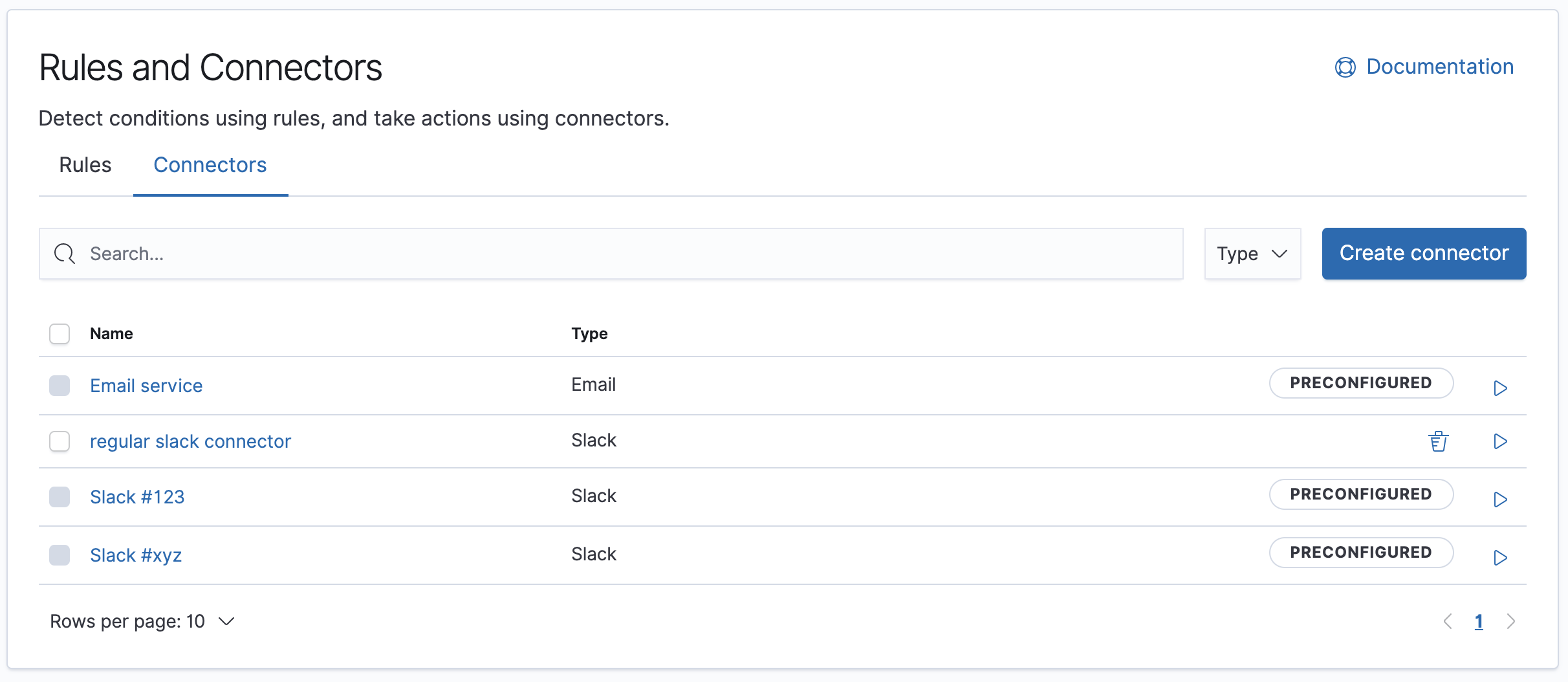Preconfigured connectors
editPreconfigured connectors
editYou can preconfigure a connector to have all the information it needs prior to startup by adding it to the kibana.yml file.
Preconfigured connectors offer the following benefits:
- Require no setup. Configuration and credentials needed to execute an action are predefined, including the connector name and ID.
- Appear in all spaces because they are not saved objects.
- Cannot be edited or deleted.
Preconfigured connectors example
editThis example shows a valid configuration for two out-of-the box connectors: Slack and Webhook.
xpack.actions.preconfigured:
my-slack1:
actionTypeId: .slack
name: 'Slack #xyz'
secrets:
webhookUrl: 'https://hooks.slack.com/services/abcd/efgh/ijklmnopqrstuvwxyz'
webhook-service:
actionTypeId: .webhook
name: 'Email service'
config:
url: 'https://email-alert-service.elastic.co'
method: post
headers:
header1: value1
header2: value2
secrets:
user: elastic
password: changeme
|
The key is the connector identifier, |
|
|
|
|
|
|
|
|
|
|
|
|
Sensitive properties, such as passwords, can also be stored in the Kibana keystore.
Built-in preconfigured connectors
editKibana provides one built-in preconfigured connector:
View preconfigured connectors
editWhen you open the main menu, click Stack Management > Rules and Connectors. Preconfigured connectors appear on the Connectors tab, regardless of which space you are in. They are tagged as “preconfigured”, and you cannot delete them.

Clicking a preconfigured connector shows the description, but not the configuration. A message indicates that this is a preconfigured connector.
